Art World
Wet Paint in the Wild: Maysha Mohamedi Inaugurates Pace Tokyo With Conveyor Belt Sushi and Pokémon
The artist takes us through a week in her life.

Welcome to Wet Paint in the Wild, the freewheeling—and free!—spinoff of Artnet News Pro’s beloved Wet Paint gossip column, where we give art-world insiders a disposable camera to chronicle their lives on the circuit. To read the latest Wet Paint column, click here (members only).
Pace has officially opened its gallery in Tokyo this month, and to inaugurate the space, they brought over an exhibition by Los Angeles-based painter Maysha Mohamedi. The show is all about the city of Tokyo in a somewhat abstracted sense: each work is based on a journal entry that Mohamedi made when she visited the city over 20 years ago.
To make this diaristic show even more of a diary, I asked the artist to chronicle the opening (and her quick trip over to Frieze Seoul) with a disposable camera. Let’s hear how it went…
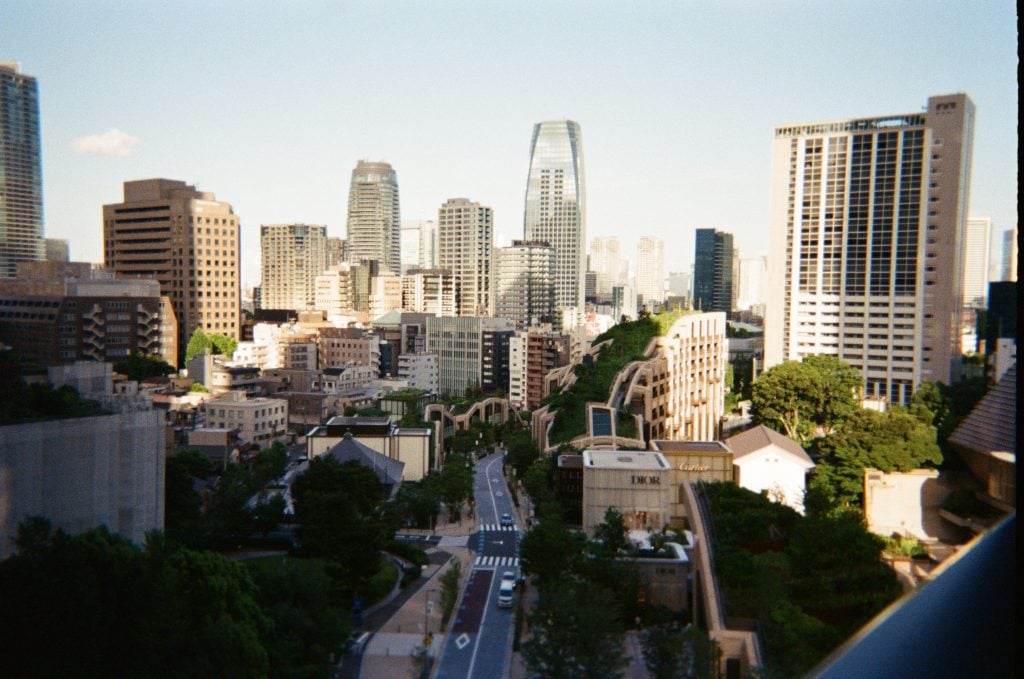
Azabudai Hills, Tokyo, seen from above. My show, “yesterday I was a tiny tube of toothpaste,” inaugurates Pace Tokyo (that curvy building down there) in exactly two weeks.
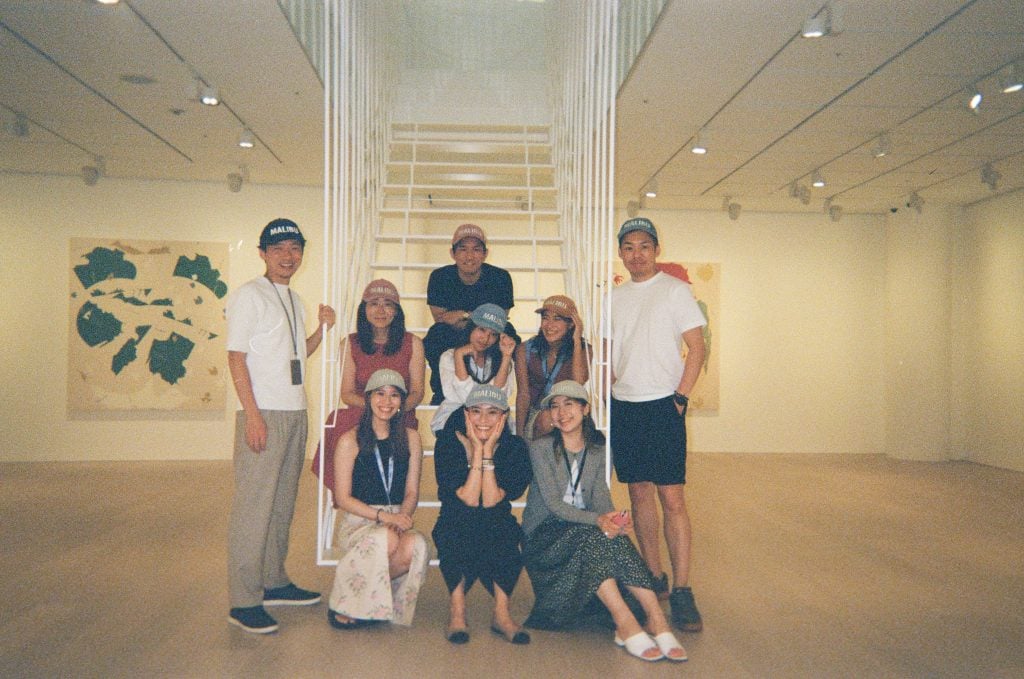
After months of zooms and emails, I meet the Tokyo team in person and distribute hats advertising my nationality.

The show looks exactly like the digital renderings, but I feel like something is wrong. I finally realize that the Lego people, who live inside my foam model back in Los Angeles, have misled me to believe that I’d have a 20-foot clearance above my head.

My son gets a special subway card for kids that chirps like a baby bird every time he scans it for a ride. I think this prevents grown-ups from trying to get half-price fare.

We go to Sushiro, a conveyor belt sushi place we know about from our Pokémon card dealer back in Los Angeles.
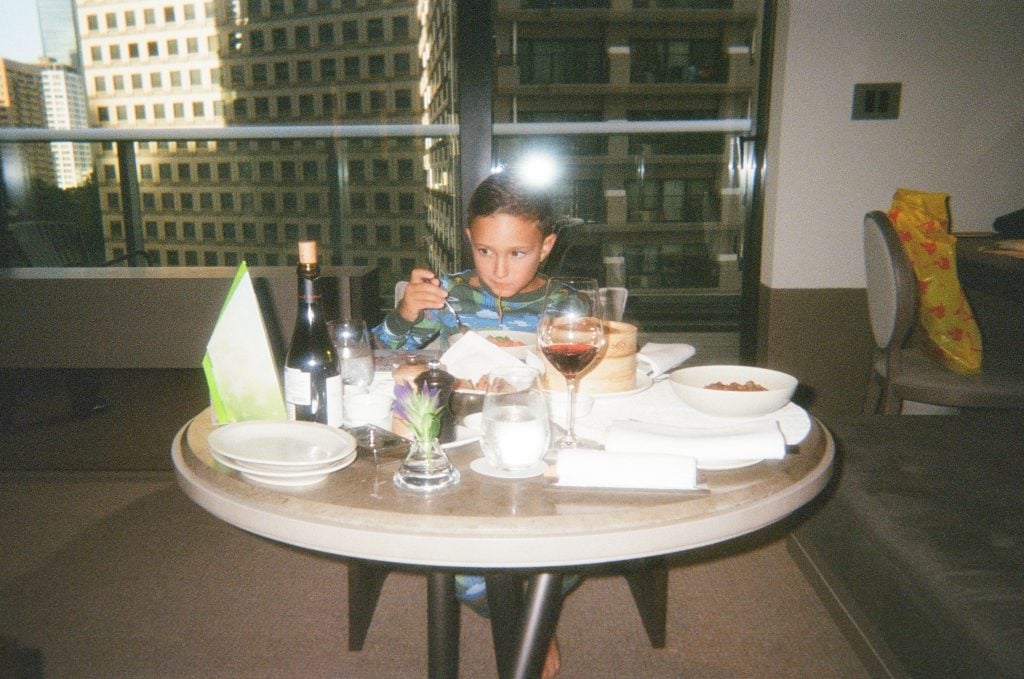
I have an event tonight where I would like to look professional, so I leave Wolf with a nanny arranged by the hotel concierge and the Pace Tokyo team. I’ve been fearful about it for months—and went through hell to set up a child’s smartwatch that can be tracked and send messages internationally—but Atsuko arrives and she’s a mature woman who inspires both obedience and joy. I am wearing a skirt, so I’ve shaved from the knees down, and I feel good about my choices in life as I walk away.
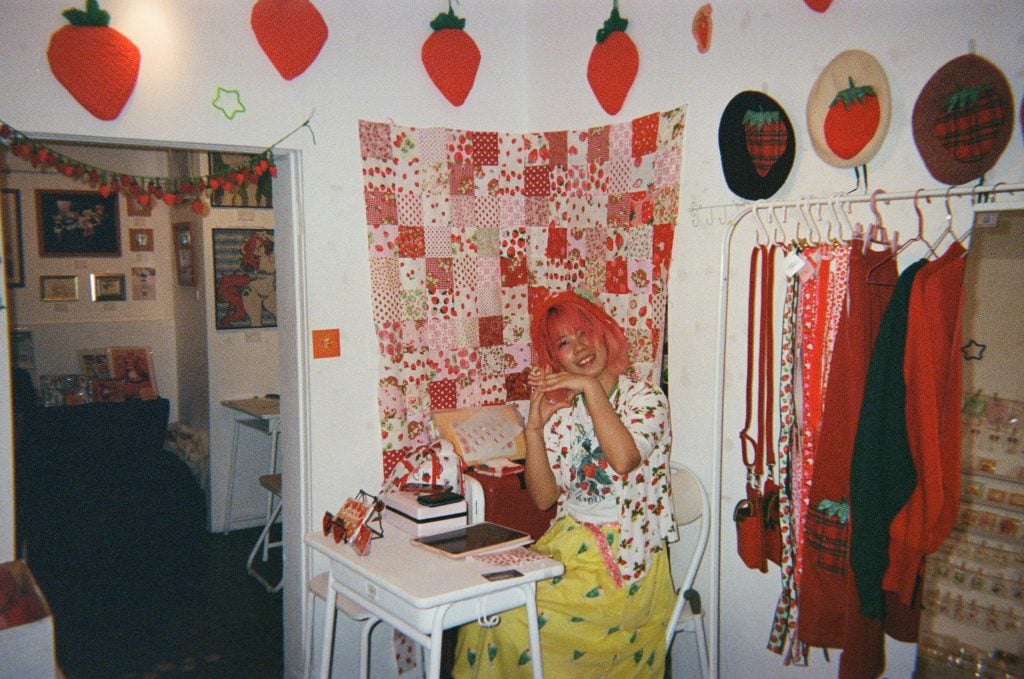
I buy strawberry earrings for my cousin at a gallery complex in Shibuya called Design Festa. I try to explain to this young woman that I came here 20 years ago. She points to a frame on the wall displaying the funky exterior of the building over the years. She scans her finger across the surface until she gets to the photo from 2005 and I enthusiastically nod my head, “Yes!!”
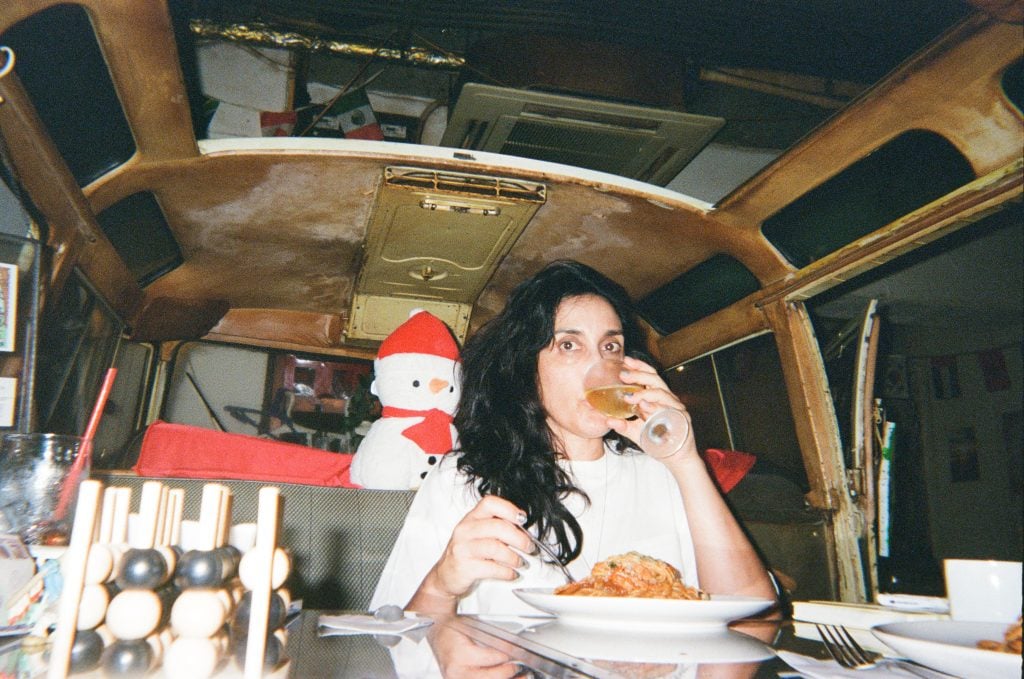
I eat my dinner inside a VW bus parked at a Hawaiian themed café called Frangipani. The song “Son of a Preacher Man” comes on and Wolf says, “Hey, Mom! That’s your song!” I order two glasses of wine because I am happy being around my boy and some familiar décor.
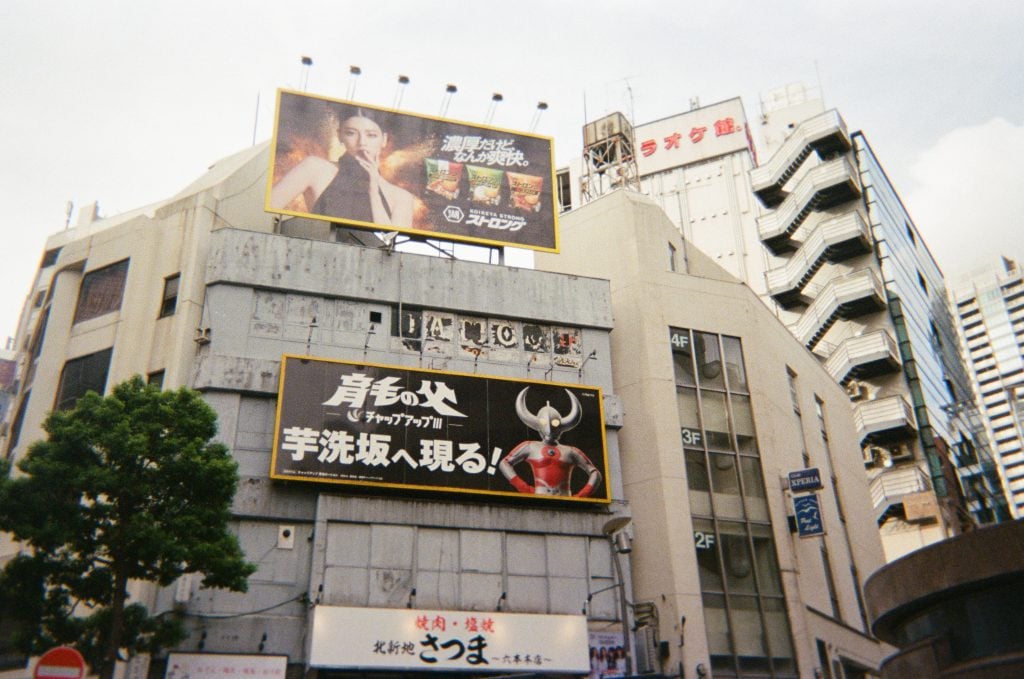
We take the subway out to Akihabara to visit an eight-story secondhand store called Mandrake. It’s filled with all sorts of vintage manga, Pokémon, and Star Trek stuff (and more). Nobody at the gallery understands where I’ve been until they finally realize I’m talking about “Mahn-duh-rock-eh,” not “Man-drake,” as I’d been pronouncing it. It’s our last night in Azabudai Hills before we return next week for my opening.
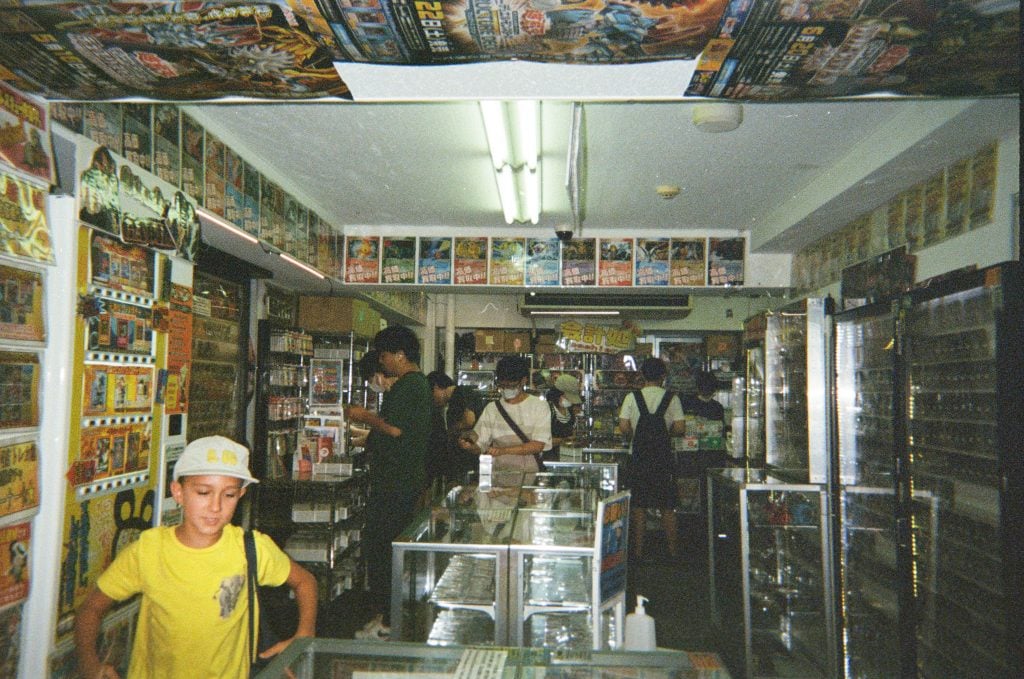
Ask me anything about Pokémon.
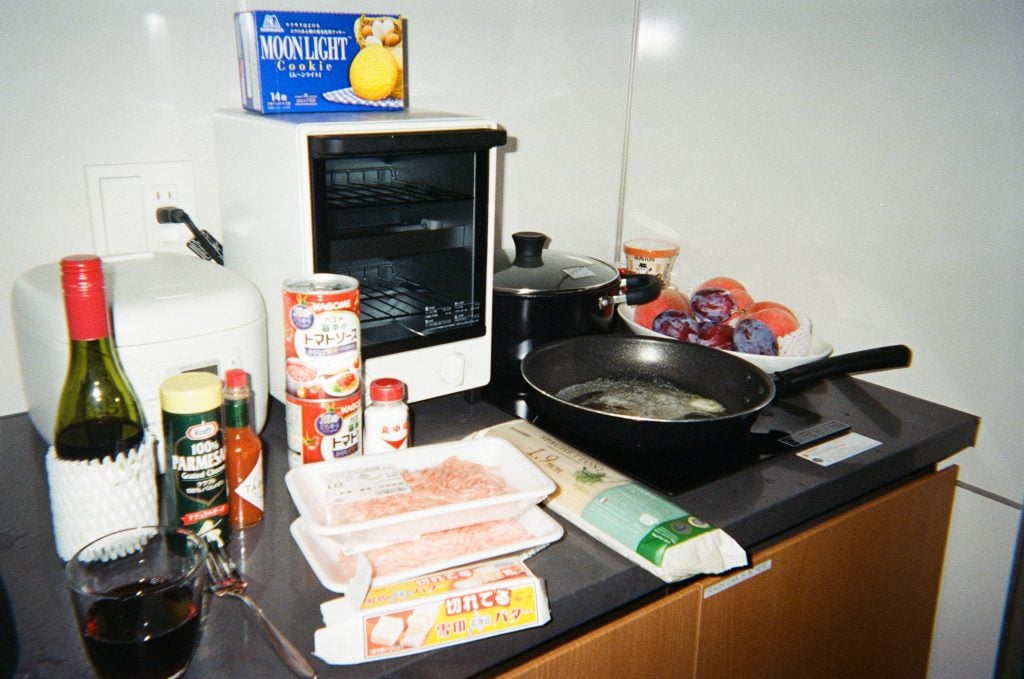
I nervously leave Wolf alone at our new apartment in Ginza to do an exhibition walkthrough at the gallery. It was his idea, actually, but he still had me Google if it was legal. We communicate swiftly, using heart emojis, whenever my audience turns away from me. Now, I’m making spaghetti for us while listening to Chet Baker and it’s the first time I’ve cooked in a week. Wolf’s brother arrives tomorrow with their dad and then I fly to Seoul with Kyoko Hattori, the SVP of Pace Tokyo.
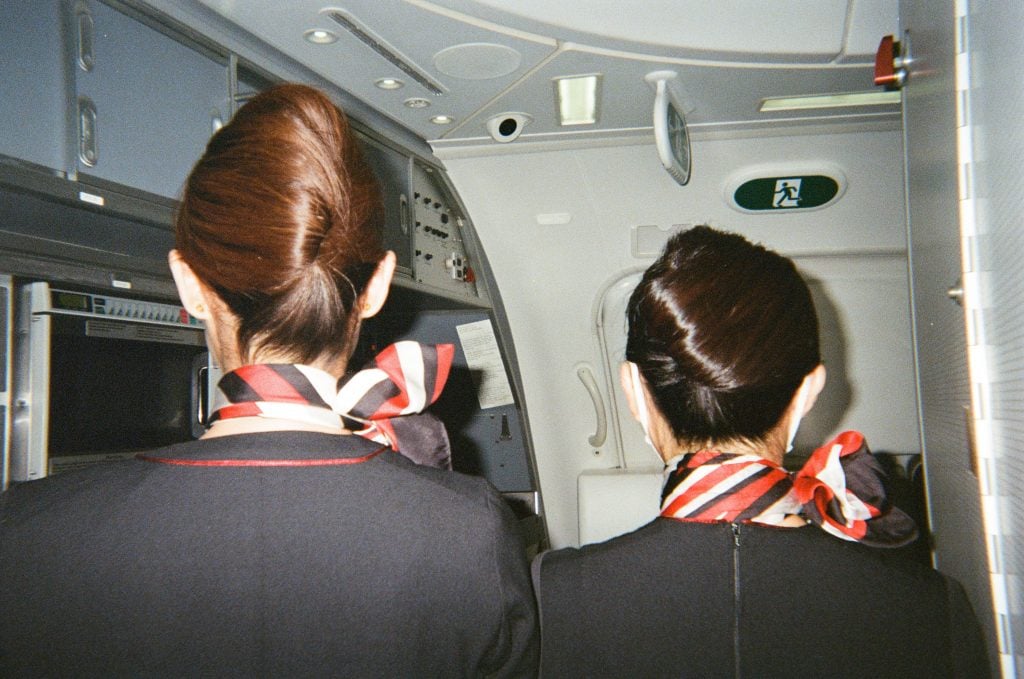
It’s my first time traveling to Korea, and my first time flying anywhere for just one night. Kyoko and I eat breakfast in the Japan Airlines lounge, and I loosely copy her food choices, trying to ease the awkwardness of traveling together. A soft serve machine—but for rice—goes haywire so that a large mountain of rice builds up near us; I tell Kyoko that this symbolizes the abundance of our trip. I turn on my cellular service for the first time in ten days and the text messages and missed spam calls roll in like the blurry fruits of a Vegas slot machine.
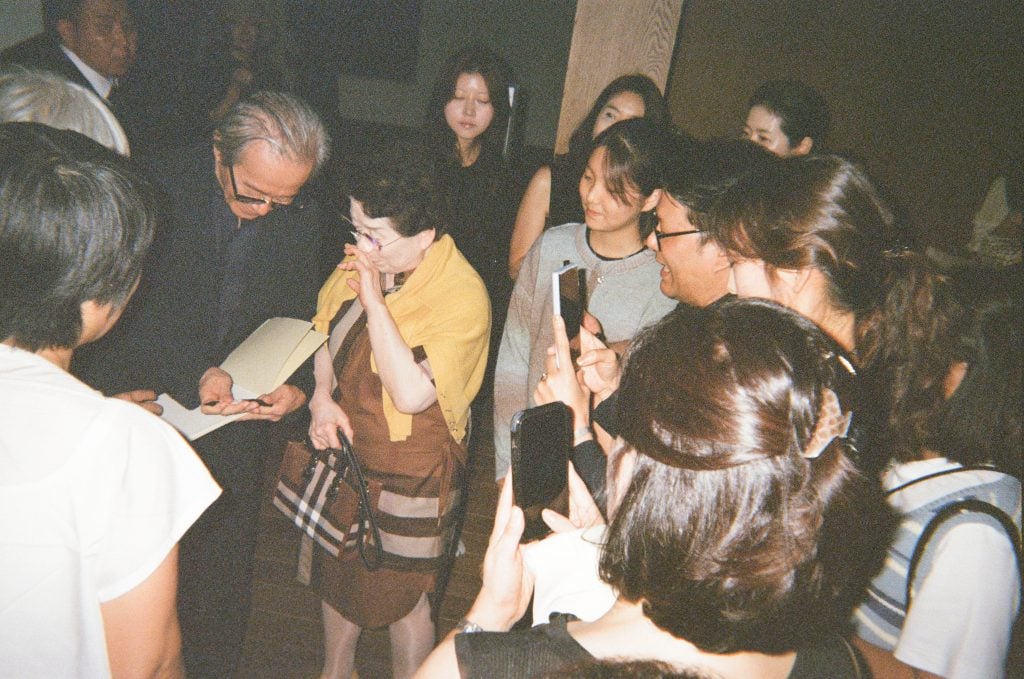
Samanthe Rubell, President of Pace, texts me about our ETA. I tell her that Kyoko and I are getting our hair washed and we’ll be at the gallery by 5:30 that evening. She says she wishes she had a hairbrush, so I ask her if she wants my hotel comb. Tonight, Pace Seoul opens a joint presentation of work by Lee Ufan—pictured here being mobbed by fans—and Mark Rothko. I have the opportunity to meet Christopher Rothko, Mark Rothko’s son, who is a generous and warm conversationalist. His wife joins the circle and wordlessly hands him his allergy pill. I’m feeling really unsteady tonight—having left Sam and the kids in Tokyo—but witnessing this tender marital gesture brightens my dark frame of mind…

I go to Dongdaemun (Seoul’s toy and stationary district) on the first day of Frieze Seoul. I buy Korean Pokémon cards for the kids and lavishly burn through several packs of instant camera film while mentally rehearsing conversations and scenarios that have not yet happened. I discover a seafood market area. Nobody knows where I am. I return to Tokyo tonight.
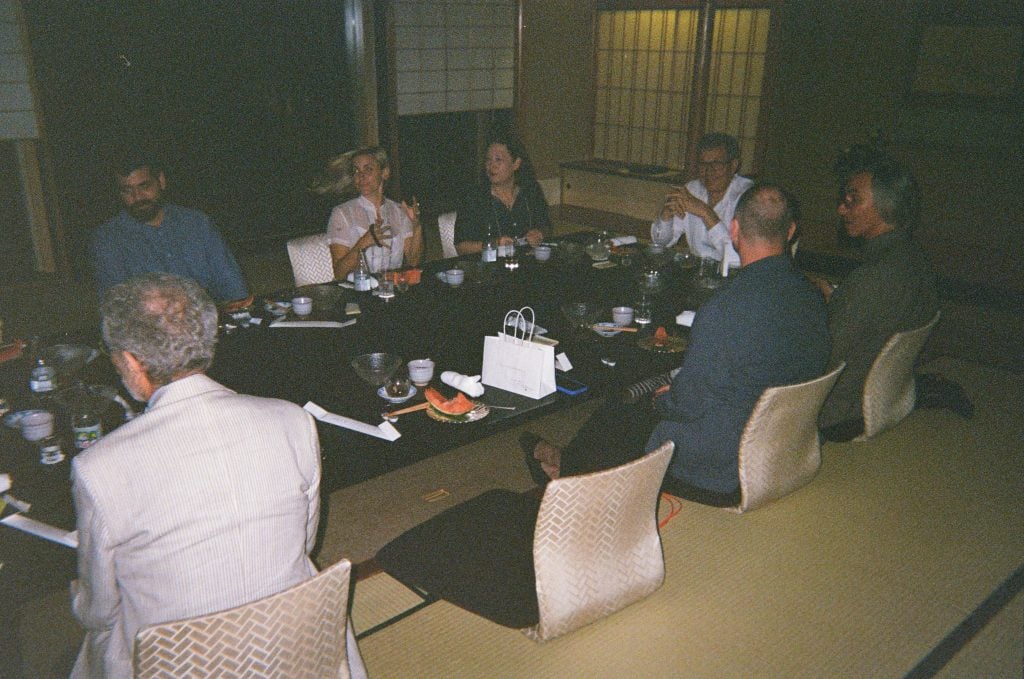
We try the nanny service again and attend a grown-up dinner at a traditional Japanese place called Daigo. Arne Glimcher leans over and asks me if I found the meal satisfying. I whisper back, “Yes,” and then add, “but I did think about pizza and cereal a couple of times.” He grins. As we are leaving, I overhear Marc Glimcher talking to someone about me: “…she can get away with a lot more than you can.”
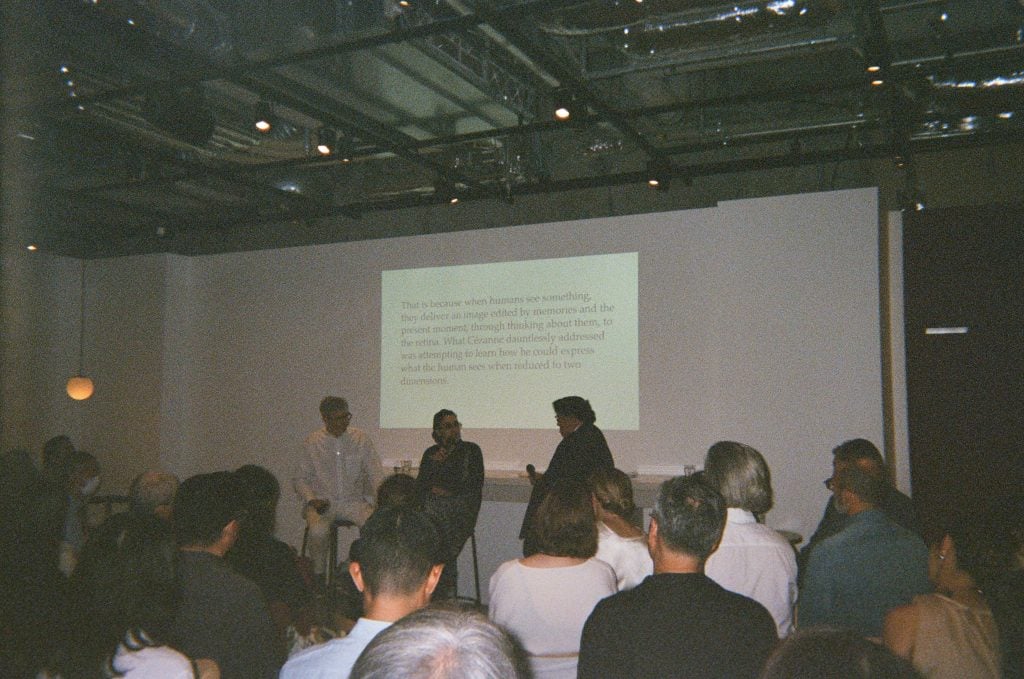
Marc and I do interviews for TV Tokyo and some other stuff that requires a translator. Then we participate in a conversation with Mr. Yasuhide Shimbata, Chief Curator of Tokyo’s Artizon Museum, drawing a pretty big crowd. Afterwards, everyone commends me for being “so relaxed,” which tells me they were worried.
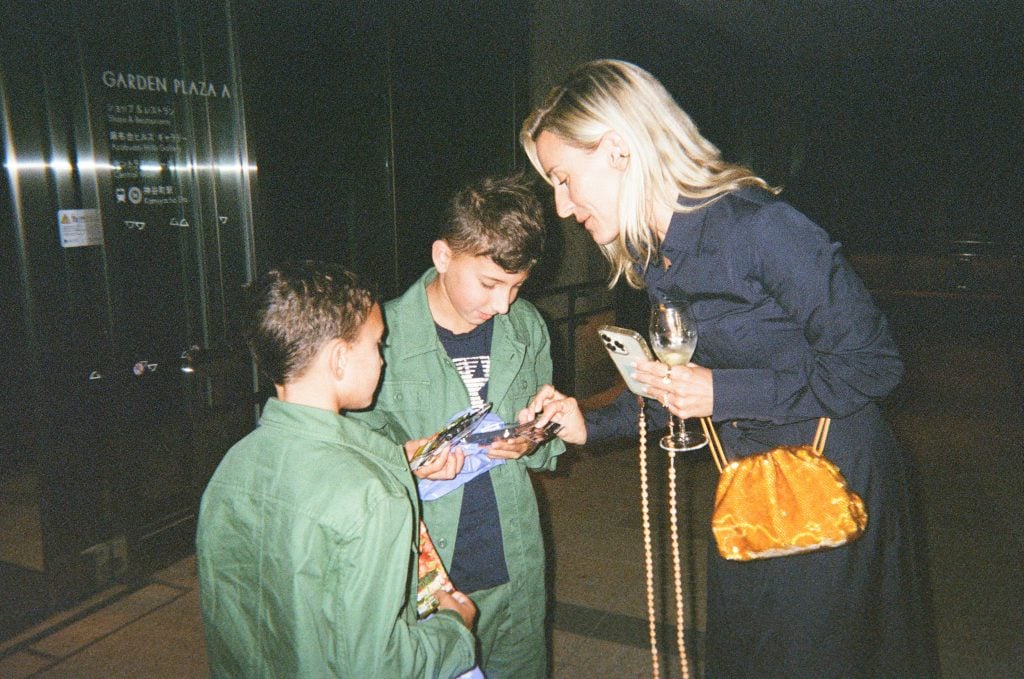
The boys show up halfway through the opening, as planned. They oscillate between wild things we can barely wrangle and artificially subdued gentlemen reciting the following sentence: “Nice to meet you, sir, I’m Maysha’s son.”
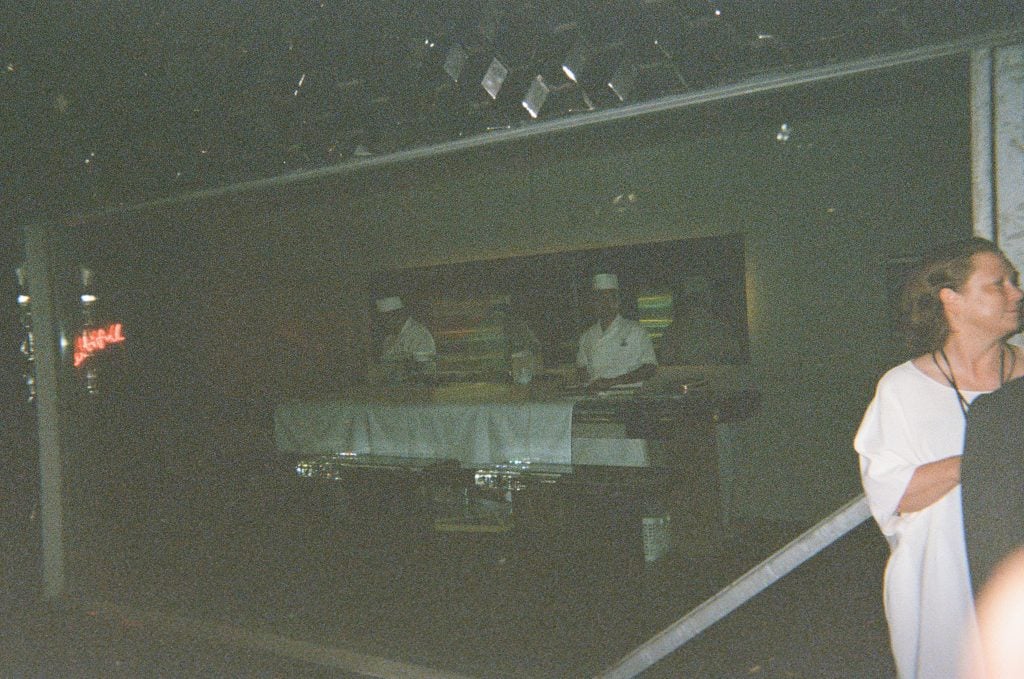
My opening dinner takes place in a special chamber situated inside an Olafur Eliasson sculptural wall, where two sushi chefs serve six guests at a thick glass table. More guests watch from an adjacent vestibule with hopes of getting seats. Our faces and the sushi glow red from a hanging neon artwork. Chet Baker plays softly, and I make a wish that nothing ever goes sour between me and the people at this table.
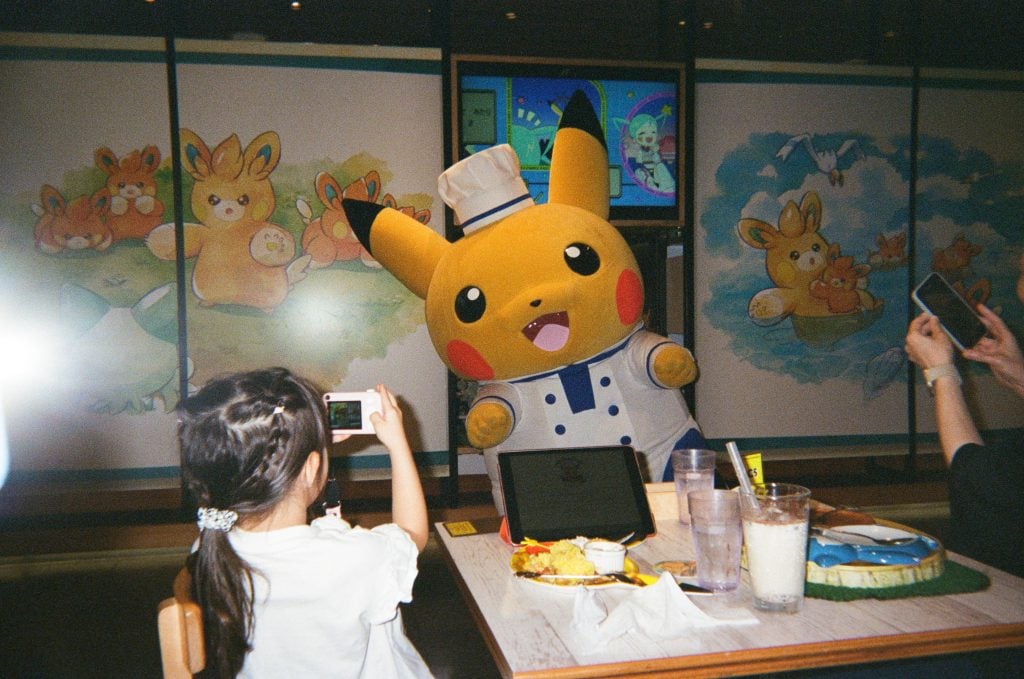
A final dinner at the toughest reservation in town (bless you Pace Tokyo team and Kim Simon).





